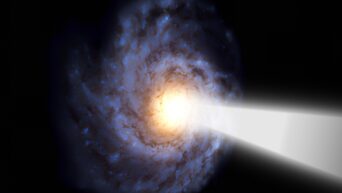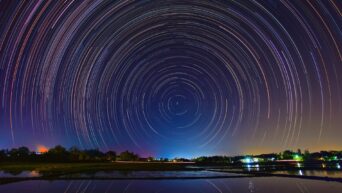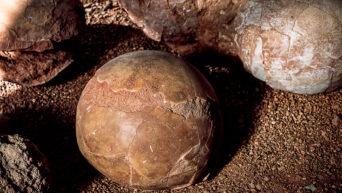Scientists uncover potential evidence of life on a distant ocean-covered planet using data from the James Webb Space Telescope
Imagine a planet, bathed in the glow of a distant red sun, wrapped in a steamy ocean and potentially teeming with microbial life. Sounds like science fiction, right? Well, scientists might have just found something that brings that cosmic dream one step closer to reality.
Astronomers using the James Webb Space Telescope (JWST) have detected something extraordinary on a distant planet called K2-18b — molecules that, as far as we know, are only produced by life here on Earth. These findings could mark a giant leap forward in our search for extraterrestrial life.
So, What Exactly Did They Find?
The discovery centers around two fascinating molecules: dimethyl sulfide (DMS) and dimethyl disulfide (DMDS). On Earth, these are mostly made by marine microorganisms like phytoplankton. Now, astronomers believe they’ve spotted these same chemical signatures in the atmosphere of K2-18b.
And we’re not talking about faint traces. The levels of these molecules appear to be thousands of times more concentrated than what we see on Earth — a real eyebrow-raiser for scientists.
ALIEN LIFE? SCIENTISTS DETECT POSSIBLE LIFE-MADE GAS ON DISTANT PLANET
A molecule only made by microbes on Earth — dimethyl sulfide — has been detected on exoplanet K2-18b.
It’s 124 light-years away and may be a Hycean world: ocean-covered, hydrogen-rich, and potentially… pic.twitter.com/5MQwnHRXp4
— Mario Nawfal (@MarioNawfal) April 18, 2025
Meet K2-18b – The Possible Alien Ocean World
K2-18b orbits a red dwarf star in the constellation of Leo, about 124 light-years away from us. It’s what researchers call a “Hycean world” — a planet that’s larger than Earth (about 2.6 times its size) but possibly covered in a vast ocean. The temperatures there are surprisingly Earth-like, and it sits right in its star’s habitable zone — the sweet spot where conditions could support life.
And get this: a year on K2-18b is just 33 Earth days long. So, it zips around its star pretty quickly.
Why Is This Such a Big Deal?
According to Professor Nikku Madhusudhan from the University of Cambridge, who led the research, this is the strongest evidence yet of potential biological activity beyond our solar system. While earlier data from JWST revealed the presence of methane and carbon dioxide on the planet — both crucial to life as we know it — this latest analysis adds the real showstoppers: DMS and DMDS.
“This could be the tipping point,” says Professor Madhusudhan, “where the question of whether we’re alone in the universe becomes one we can actually answer.”
But Hold On – Is It Definitive Proof of Life?
Not quite — yet.
The team is being cautious. While the evidence is extremely promising, it hasn’t reached the gold-standard level of scientific certainty — what researchers call five-sigma. Right now, they’re at three-sigma, which means there’s a 0.3% chance the findings happened randomly. That’s impressive, but not quite definitive.
To be sure, they’ll need 16 to 24 more hours of telescope time to gather enough data to rule out other explanations, like unknown non-biological processes.
A New Era of Discovery?
This isn’t the only exciting development in space biology lately. Just last month, scientists reported finding massive organic molecules on Mars — long chains that could come from the building blocks of fat, hinting at past microbial life on the Red Planet.
But K2-18b is different. If the findings hold up, it may not just be about past life — we could be looking at a planet actively alive right now.
What’s Next?
The team will continue analyzing data, running simulations, and requesting more observation time from JWST. They also plan to test whether these molecules could be made without life — though so far, no known non-living process explains the high levels of DMS and DMDS.
As co-author Savvas Constantinou put it: “Our work is just the beginning of what could be a much bigger story.”
Final Thought
Whether or not this turns out to be our first glimpse of alien life, it’s a thrilling reminder that we’re living in a time when such discoveries are not just possible, but actually happening.
Who knows — maybe one day soon, we’ll confirm that we’re not alone in the universe.
And it might just start with an alien ocean, 120 light-years away.

































